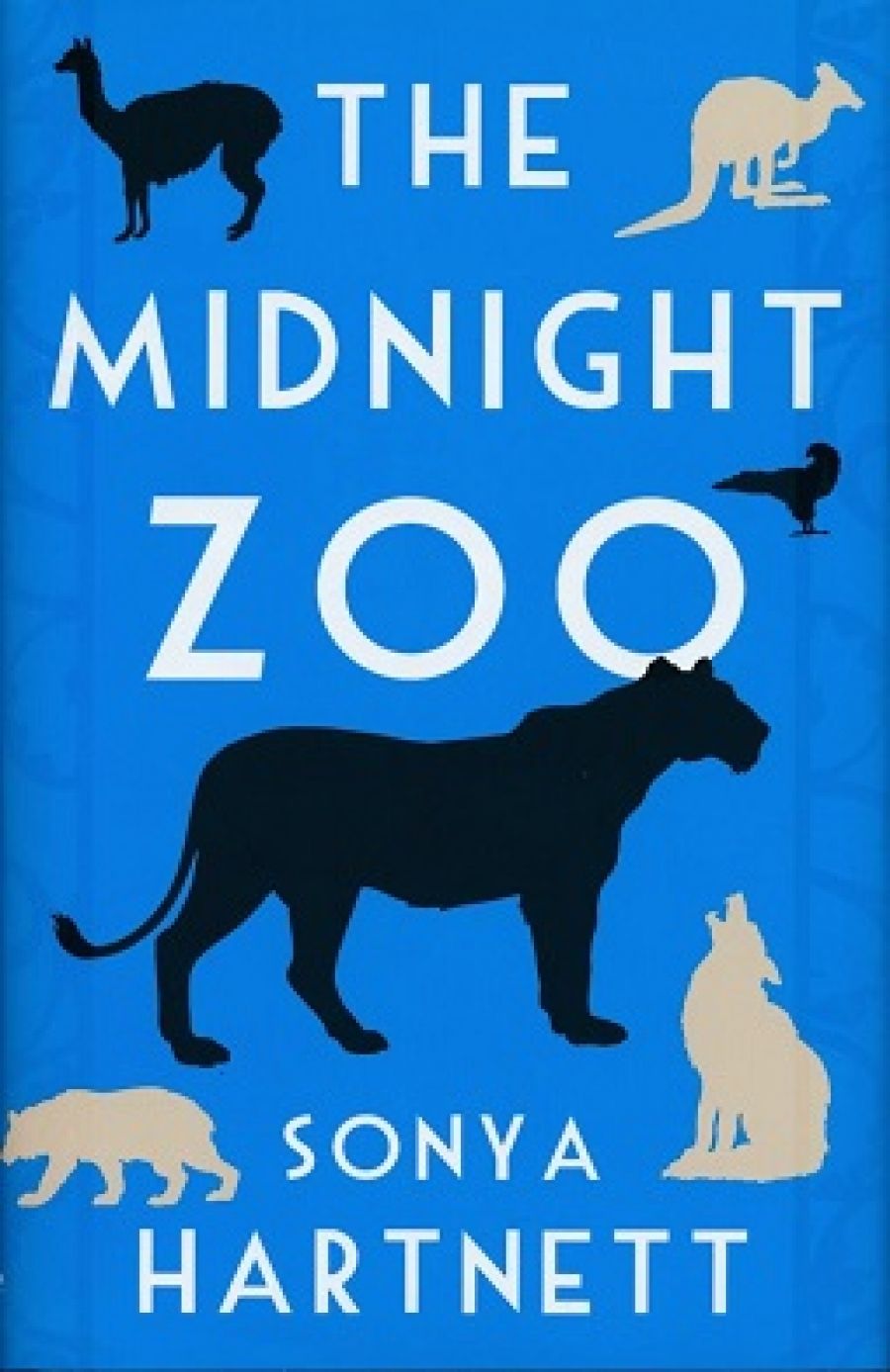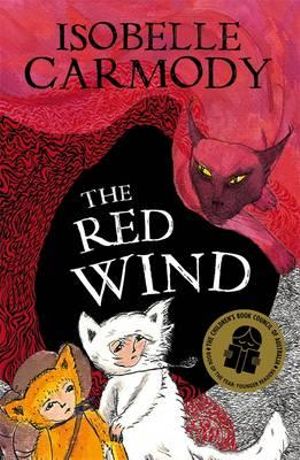
- Free Article: No
- Contents Category: Fiction
- Review Article: Yes
- Online Only: No
- Custom Highlight Text:
I had fun imagining Sonya Hartnett and Isobelle Carmody indulging in a little pre-publication chit-chat:
IC: What are you working on now, Sonya?
SH: A children’s story about two orphaned brothers battling for survival in a world turned upside down; talking animals; themes of freedom and loss. What about you?
IC: A children’s story about two orphaned brothers struggling for survival in a world suddenly turned alien; talking animals; themes of resilience and loss …The result is two different novels, but the marketing meetings at Penguin must have been interesting.
- Book 1 Title: The Midnight Zoo
- Book 1 Biblio: Viking, $24.95 hb, 186 pp, 9780670074051
- Book 1 Readings Link: booktopia.kh4ffx.net/DPKOd
- Book 2 Title: The Red Wind
- Book 2 Biblio: $19.95 hb, 223 pp, 9780670074037
- Book 2 Cover Small (400 x 600):

- Book 2 Cover (800 x 1200):

- Book 2 Readings Link: booktopia.kh4ffx.net/PXyRQ
If you didn’t already know that Sonya Hartnett had won the Astrid Lindgren Memorial Award, an international prize awarded for the best in writing for young people, you would still know, when you finished The Midnight Zoo, that here was an author of rare brilliance. In the opening chapter, two young brothers, Andrej and Tomas, stumble upon a small zoo on the edge of a ravaged and deserted village. Swaddled in the sack on Tomas’s back is a tiny baby, their sister Wilma, her mouth as she cries ‘a furious butterfly with pink, opened wings’ and her little tongue wagging ‘like a fish tail between naked gums’. Hartnett’s prose is rich in animal imagery.
Humans and animals are all victims of the war that has enveloped the country (probably Czechoslovakia) and left ‘great claw-marks on the land’. The children are Rom, or gypsies, survivors of a massacre two months earlier that wiped out their entire extended family, and ever since their lives on the road have been ‘gnawed at every edge by worry’. The details of this are not revealed until halfway through the novel. Hartnett’s description of both the murders and a war-torn landscape across which flows a miserable tide of humanity comprises some of her finest writing.
The caged animals also have stories to tell, and, after a bombing raid that destroys what is left of the village, and perhaps more, they do. The boys learn how each animal lost its freedom and how the lioness also lost her mate and cubs. In a great display of trust, Andrej allows the starving animal to sniff Wilma: ‘“They smell the same,” the lioness murmured. “My cubs smelt as she does. Like pollen.” She breathed deeply again, and Andrej saw the missing cubs returning to her on the wings of the baby’s perfume.’
The air raids are retaliation for an act of resistance, the instigator of which was Alice, the zookeeper’s daughter. Now she and everybody in the village have left or been killed. The brothers decide to find the keys to the cages and to set the animals free. In a bombed landscape during a war, this does not seem likely to produce a happy ending, but Hartnett delivers one that is pure genius and which may well move you to tears. The only way to convey the beauty and emotional power of the prose is to quote it, but that would spoil the pleasure of reading it, appreciating how skilfully Hartnett has brought this touching fable to such a heartbreaking, but satisfying, conclusion.
It would be a hard-hearted reader who wasn’t also moved by Isobelle Carmody’s fantasy The Red Wind, in which the two brothers at large in a ravaged landscape are Bily and Zluty, small furry creatures who have hatched from a metal egg and have since forged a life of self-sufficiency. Bily, the more timid of the two, is the homemaker; Zluty makes a long trek once a year to the Northern Forest to collect foodstuffs to sustain them through the winter. One year, while the brothers are thus separated, a strange red cloud sweeps across the sky and stones fall from the sky. The brothers’ courage is tested in different ways as their home and livelihood are destroyed. Once united, and in the company of a wounded monster and a bird called Redwing, they set out on a long journey in the hope of finding a new home in the West. This is Book One in a series called The Kingdom of the Lost.
Neither author has ventured into completely new territory: The Midnight Zoo has parallels with The Silver Donkey (2004), and The Red Wind is similar in style and environmental theme to the trilogy of Little Fur (2005). Once again, the illustrations, done by Carmody herself, add immeasurably to the charm – and understanding – of the story.
Both narratives are about the struggle for survival in the face of overwhelming loss and grief, and the resilience that comes from the comfort of others and the inner strength gained when a fear is confronted and conquered. As little Tomas tells the more timid zoo animals when they are faced with the prospect of a life outside their cages: ‘It is scary sometimes ... But the scary bits are what make you brave.’ In both stories, it is the reality behind the fantasy that breaks the heart.


Comments powered by CComment